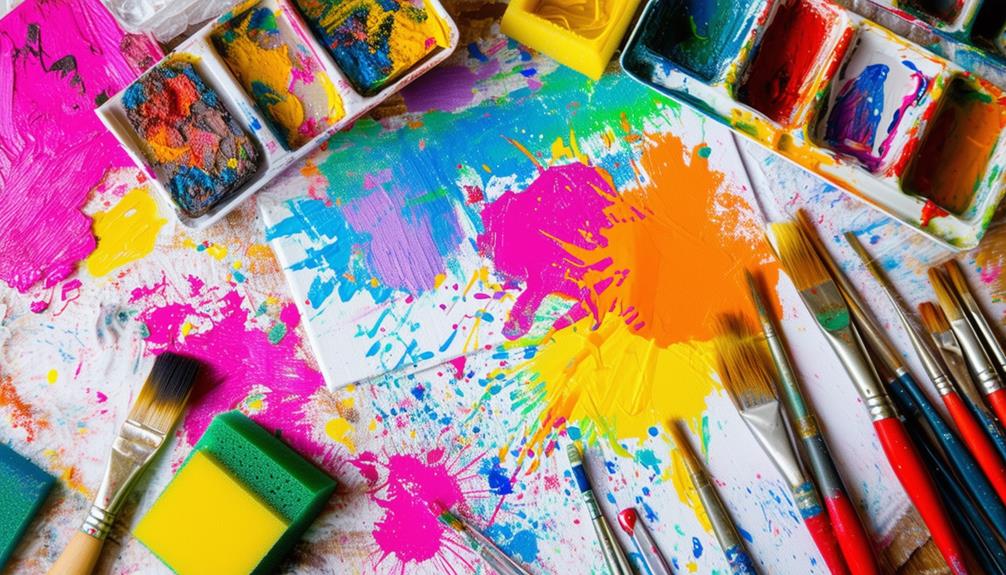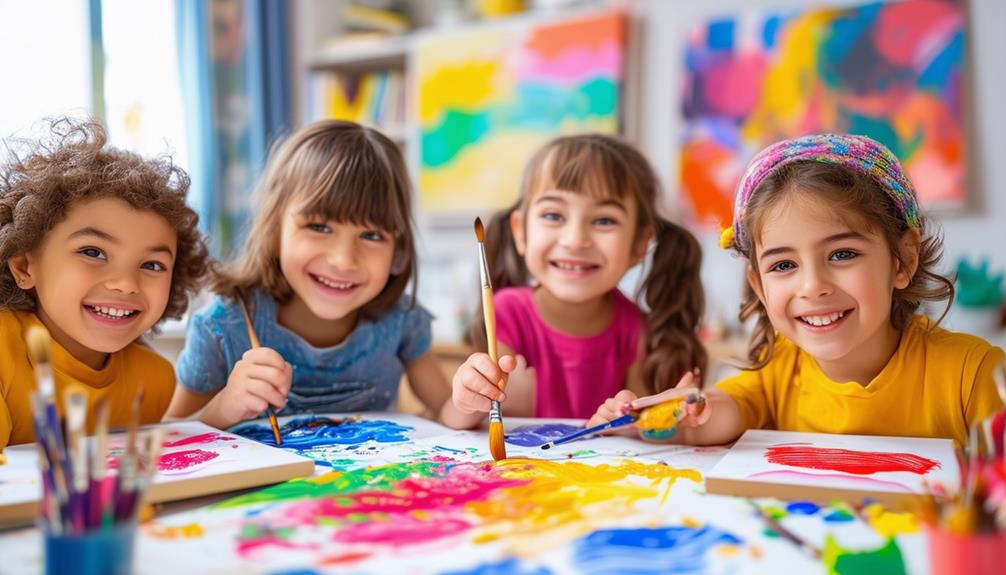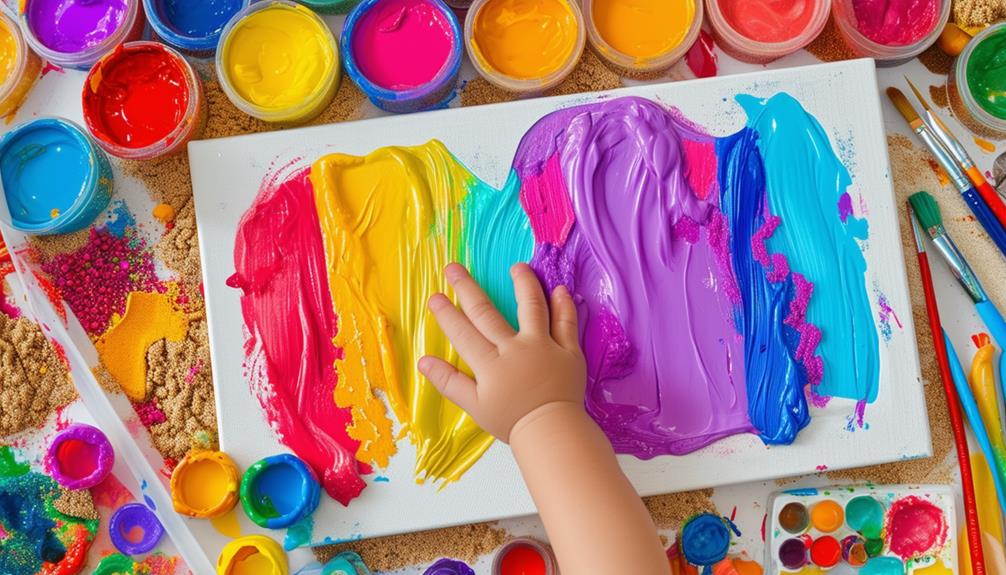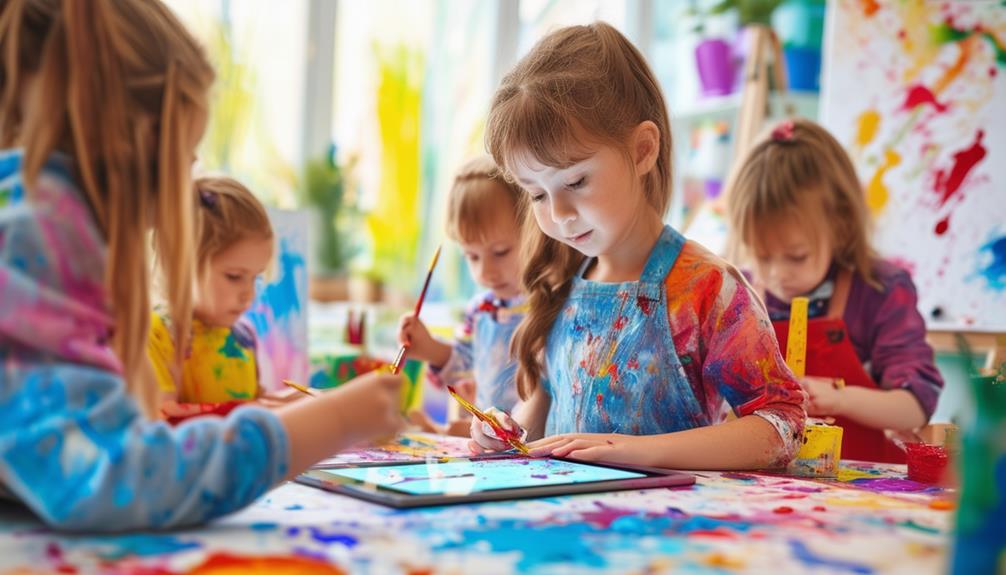Painting on Different Surfaces: Paper, Canvas, Wood, and More

Exploring painting on various surfaces such as paper, canvas, wood, and even unconventional options like YUPO paper can expand the horizons of your artistic journey. Each surface has its unique characteristics—watercolor paper offers immediacy, canvas provides resilience, and wood panels add a timeless quality. These choices can significantly influence your technique and creativity, providing textures and depths you might not have considered. Curious about how these surfaces can transform your work and enhance your artistic expression? Let's delve deeper into what each has to offer.
Watercolor Paper
Watercolor paper is a must-have for artists who want a reliable surface for their work without the hassle of stretching. It offers a stable foundation, allowing you to concentrate on your creativity rather than preparation. This type of paper enables you to start painting immediately, which is ideal for spontaneous projects or when inspiration strikes.
Available in white or slightly tinted options, watercolor paper enhances the vibrancy of your colors. Choices like Bamboo Washi and Kozo Mixed Paper offer moderate thickness, preventing wrinkling and ensuring smooth painting surfaces. These papers are engineered to withstand the water and pigments typical of watercolor painting without buckling.
One of the greatest benefits of watercolor paper is the ability to experiment with various textures and effects. Each type of paper interacts differently with water and pigment, leading to unique and often delightful results. Whether you're aiming for soft, diffused washes or sharp, defined lines, the right watercolor paper can significantly impact your artwork. So, experiment with different types to discover your preferred textures and effects.
Canvas Supports
Ever wondered why canvas supports are the go-to choice for many artists? The answer lies in the versatility and resilience of canvas, especially when it is properly stretched. Stretching a canvas involves using tools like canvas pliers to secure the cotton canvas to a wooden frame. This process ensures the canvas is taut, providing a stable foundation for your artwork.
Primed canvas is pre-treated with a layer of gesso, which enhances paint adhesion and prolongs the life of your piece. If you're working with raw linen canvas, consider mounting it on materials like Kozogami Sarashi or Mizarashi with Dosa Sizing for added strength and durability.
Wood panels are another option for canvas support. Mounting your canvas onto wood panels offers a sturdier base compared to traditional wooden frames. These panels provide a solid surface that resists warping and supports more robust painting techniques.
Whether you choose traditional wooden frames or modern wood panels, each type of canvas support offers unique benefits suited to various styles and techniques. When preparing for your next painting, consider which canvas support will best enhance your art.
Wood Panels
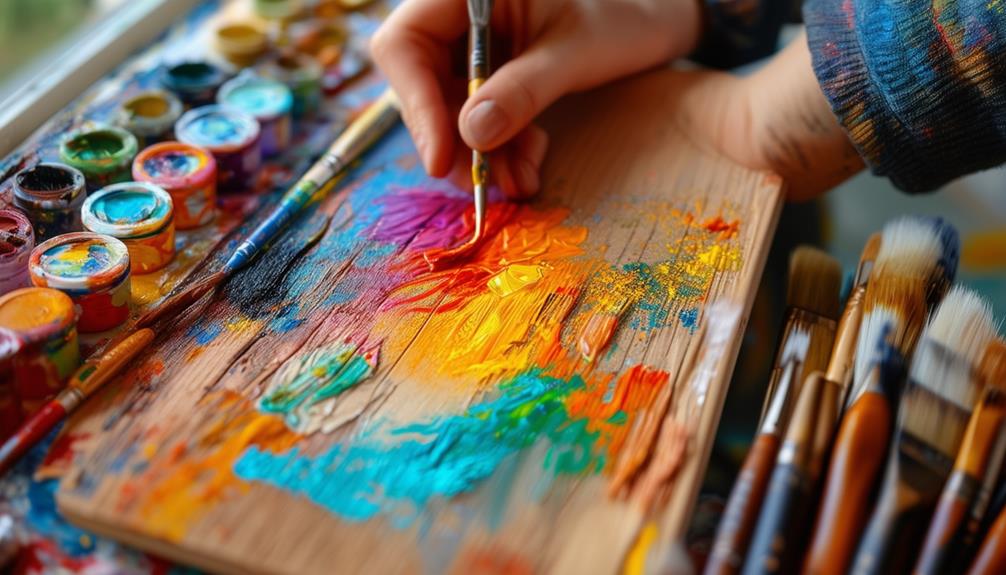
When selecting wood panels for your artwork, you have several options, including hardwood, hardboard, and MDF. Each type offers unique advantages and disadvantages that can affect your decision. Proper surface preparation and priming are essential before painting. Here's how to choose the right wood panel and prepare it for your masterpiece.
Types of Wood Panels
Choosing the appropriate type of wood panel can profoundly affect your painting's durability and appearance. Here are some options to consider:
- Hardboard Panels: Examples like Ampersand Gessobord are made from compressed wood fibers. These panels are smooth, affordable, and recommended for beginners.
- Medium-Density Fibreboard (MDF) Panels: MDF panels are cost-effective and come in various thicknesses, allowing you to select the ideal one for your project. They offer a stable surface for painting and are highly versatile.
- Hardwood Panels: Traditional wood options include oak, birch, mahogany, and walnut. These panels are exceptionally durable but may be less favored due to their weight and cost.
Benefits of using wood panels:
- Stability: They provide a sturdy surface that resists warping over time.
- Versatility: Different wood types enable experimentation with various textures and finishes.
- Longevity: When properly maintained, wood panels can last for generations, preserving the beauty of your artwork.
Selecting the right wood panel can significantly enhance your painting experience.
Preparation and Priming
After selecting the ideal wood panel, the next step is to prepare and prime it for painting. Begin by sanding the surface to create a smooth texture, ensuring the paint adheres well for a professional finish. Use fine-grit sandpaper to avoid deep scratches. Once sanded, clean off any dust to ensure a clean surface for priming.
Next, apply an acrylic primer or gesso to your wood panel. This step is crucial as it enhances paint adhesion and prevents the wood from warping. Start with a thin, even layer of primer and let it dry completely. For optimal results, apply multiple coats, allowing each layer to dry before adding the next. Lightly sand between each coat to ensure a smooth finish.
Properly primed wood panels provide a stable and durable surface for both acrylic and oil paints. After completing your painting, consider sealing your artwork with varnish. This not only protects your piece but also adds a glossy or matte finish, depending on your preference. Following these steps ensures your wood panel is perfectly prepared for your artistic endeavors.
YUPO Paper
Mounting YUPO paper requires a specialized adhesive to ensure it stretches and adheres properly. YUPO paper's thin surface presents unique challenges, and using the correct adhesive is crucial to avoid damage during the mounting process. Incorrect methods can result in warping or tearing, potentially ruining your artwork.
Here are the key considerations:
- Fragility: YUPO paper is delicate, and unsuitable adhesives can cause tears or wrinkles.
- Adhesion: Standard glues are ineffective, leading to loosening over time.
- Warping: Improper techniques can cause warping, resulting in an uneven surface.
For professional results, consult PIGMENT TOKYO for detailed instructions and materials specifically designed for mounting YUPO paper. By adhering to their guidelines, you can effectively manage the challenges of this delicate medium and create a smooth, professional finish for your artwork.
Mixed Media Surfaces
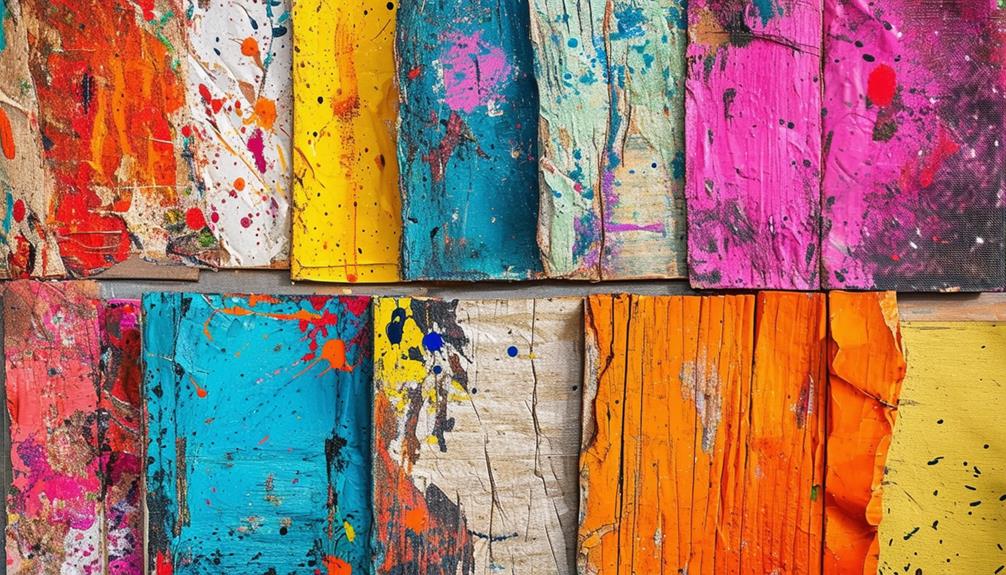
When diving into mixed media art, the variety of surfaces available—from wood panels to old book pages—opens up endless creative possibilities. You can start with something as simple as watercolor paper or upgrade to canvas panels for a more durable base. Acrylic paint works beautifully on these surfaces, allowing you to layer and mix different materials effortlessly.
Exploring unique surfaces like reclaimed wood or old books can add an intriguing dimension to your artwork. Imagine the texture of an old book page combined with the vibrancy of acrylic paint—it's a perfect match for mixed media enthusiasts. Fabric and metal are also fantastic options, adding depth and contrast to your pieces.
Affordable surfaces are readily available too. Watercolor paper, especially 140 lb or Canson XL, provides a strong foundation without breaking the bank. Canvas panels, often sold in multi-packs, are another budget-friendly choice. Primed stretched canvas or even DIY stretched canvas can offer a professional finish for your mixed media projects.
Experimentation and Creativity
Experimenting with diverse painting surfaces often leads to unique artistic outcomes that expand your creative possibilities. By trying unconventional materials like wood, fabric, or metal, you'll discover distinct textures and effects that can't be achieved on traditional paper or canvas. This kind of experimentation is especially rewarding in acrylic painting, where the medium's versatility shines on different surfaces.
Embracing mixed media art means you're not confined to one type of surface. Imagine blending watercolor paper with canvas or even old book pages. This combination adds depth and intrigue to your work, transforming it into something truly extraordinary. By stepping out of your comfort zone, you'll find that your artistic outcomes can be surprising and profoundly satisfying.
Consider these benefits when experimenting with diverse surfaces:
- Innovation: Mixing surfaces and media can inspire entirely new artistic directions.
- Skill Development: Tackling new materials enhances your technique and problem-solving skills.
- Personal Growth: Pushing your boundaries fosters creativity and confidence.

